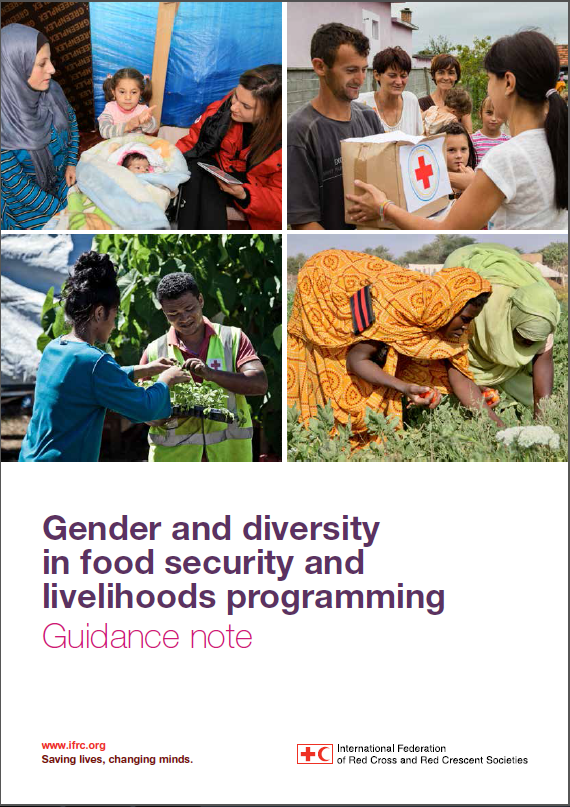Gender and diversity in food security and livelihoods programming. Guidance note - Livelihoods Centre
Asset Publisher
Gender- and diversity-sensitive food security programming lead to more equitable, effective and efficient outcomes for all members of affected communities. This guidance note provides an overview of gender and diversity issues and the practical measures that Red Cross and Red Crescent staff and volunteers should bear in mind when designing, implementing and evaluating food security programmes . It is based on the IFRC’s Strategic Framework on Gender and Diversity Issues (2013 – 2020).
Food security programming encompasses many different types of interventions depending including water for irrigation, livestock management, seeds distribution or seed bank development, livelihoods, cash- or food-for-work projects, food aid, cash and voucher transfers or any combination of these. In this guidance note, we have focused on primary production, livelihoods, food distribution/relief and cash and voucher transfers.
Over the past decade, many terms related to gender and diversity have been incorporated into declarations, plans of action, policies, programmes and projects for agriculture and rural development but very little has been translated into action. The purpose of this Guidance Note, therefore, is to provide Red Cross and Red Crescent staff and volunteers with practical steps they can take to mainstream gender and diversity into food security programmes. It should also be borne in mind that gender-based violence (GBV) is a risk in all programmes, including food security. GBV can occur in the home, in the community and even within the Movement/implementing partner. Therefore, specific measures to address GBV in food security programming are included in this guidance.
Available in English.

- Organization: IFRC
- Pages: 14
- Year of publication: 2014
- Copyright: © International Federation of Red Cross and Red Crescent Societies, 2014
- Url: http://preparecenter.org/sites/default/files/gender_and_diversity_in_food_security_programming-en-03.pdf


